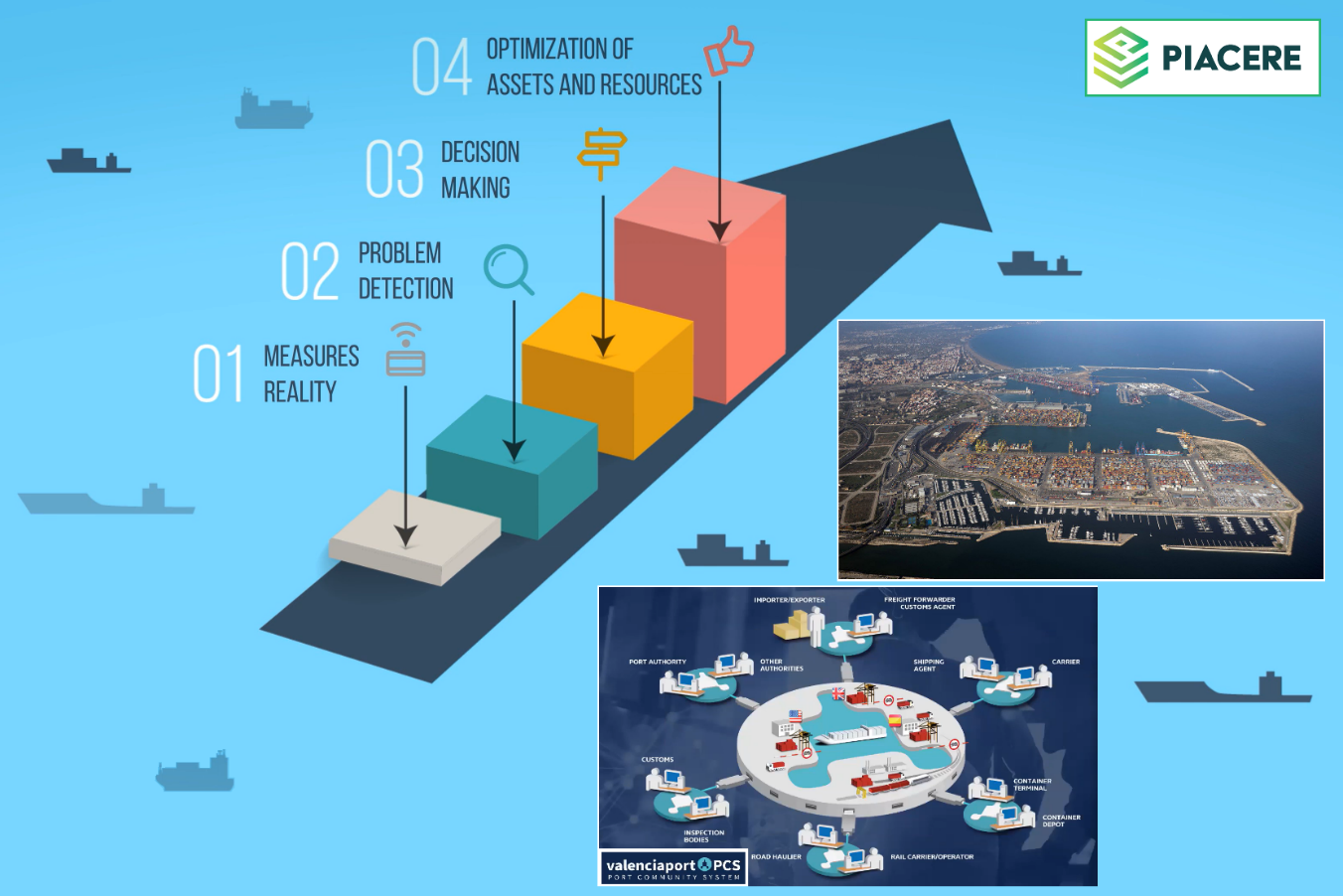Blog entry by Alfonso de la Fuente Ruiz, Ismael Torres and Christophe Joubert
The specification of the Use Cases [ 1 ] for PIACERE is moving forward, helping to outline the main advantages and savings that the project is set to achieve.
In particular, Prodevelop ( www.prodevelop.es/en ) proposed two applications for its Use Case (known as UC2): Posidonia PCS as the main use case, and Posidonia Terminal the secondary use case. The first application is deployed on premises via software containerisation, and it will be used to demonstrate the PIACERE capability to deploy over multiple configurations. In the case of Posidonia Terminal, the objective will be to manage many infrastructural elements including IoT devices. Both applications should benefit from self-healing mechanisms.
- Posidonia PCS (Port Community System) [ 2 ] is a comprehensive digital platform that allows the intelligent and safe exchange of information between public and private entities involved in port activities, in order to improve the competitiveness of the port community.
- The final goal of Posidonia PCS is to optimize, manage and automate port logistics processes through a single data presentation (“Single Window of Contact” – SWC).
- Posidonia PCS accepts different formats for the Electronic Data Exchange (EDI), making it easy for the agents involved in port operations to transmit the relevant information through a direct integration of their management systems. It saves time and ensures the quality of the data.
- Posidonia PCS allows the integration of the port community for a full management of port calls, single window, cargo manifest and summary declarations, dangerous goods manifests (‘hazmat’: hazardous materials), phytosanitary inspections, etc.
- Regulatory compliance is another key aspect of PCS, as it is obliged by the Spanish National Security Scheme (ENS – “Esquema Nacional de Seguridad”). The application follows guidance for port reception facility providers from the International Maritime Organization (IMO – FAL Convention), and handles terms, standards, and services such as FAL Forms or DUEPORT (a governmental SWC for maritime port operations).
- Posidonia Terminal [ 3 ] , on the other hand, is the enabler for the adoption of IoT (Internet of Things and Industry 4.0) in terminal operation. Posidonia Terminal 4.0 offers the intelligence to transform terminal operations, with real data to optimize operations and generate new incomes, along three main lines:
- Global Infrastructure: a complete catalogue of all the devices, sensors and machines is available from any authorised terminal. It makes it possible to use devices, sensors and machines as any other asset in an information system, in a homogeneous and seamless way, without necessarily knowing how to access them, so to interoperate the physical infrastructure with any other IT asset, such as TOS, ERP, or CMMS.
- Fast innovation platform: it offers a complete set of components to connect new devices or sensors, or to use existing ones to quickly and easily create new innovative solutions.
- Smart investment: Having real measures is the basis for decision making. A global IoT platform helps to measure the performance of investments to confirm or adapt the investment strategy.
Regarding Customer Segments, Developers and Operators (#DevOps teams) are currently aiming to reduce time in the provisioning, deployment and configuration of the infrastructure needed for their application/s, but also considering other indicators and aspects that are measurable in different units besides time, such as performance metrics, economic indicators, efficiency, technological sovereignty/independence, communication goals, abstraction level, and others. At the same time, it expects to attain higher degrees of re/deployment flexibility and advanced monitoring capabilities, while naturally providing both customers and final users with a seamless integration into their systems, plus higher efficiency in everyday operations. Without wasting infrastructural resources, it is also able to quickly identify, adapt, and respond to sudden surges in system demand via efficient infrastructure provision management with built-in self-healing capabilities.
Therefore, PIACERE has to be easily adaptable to a new infrastructure provider (or many, in multi-cloud service configurations), as well as to new IaC (Infrastructure as Code) languages, and data interchange formats. Moreover, with validation at different levels (including advanced security validations under a ‘Secure by Design’ paradigm), with a shared responsibility approach, where everyone involved in the Software Development Lifecycle, regardless of whether they are a security expert or not, has a role to play in building security into the DevOps CI/CD (continuous integration and continuous delivery or continuous deployment) pipeline. This means, for instance, that future software patching and update operations in the UC application will be easily managed and executed, while being dynamically optimized, causing minimal disruption in the core processes and workflows of the application´s final users.
As such, for UC2, we have observed increased demand for Cloud Computing solutions coming from customers, in the context of maritime operations, critical infrastructures, and electronic data interchange markets. This sits in line with global demand regarding Cloud Computing, IaC, IaaS (Infrastructure as a Service), Advanced Logistics, AI/ML approaches, Cybersecurity, and IT solution integration.
All in all, the whole PIACERE project team is feeling very optimistic about the project´s development status and has placed high hopes on its successful completion.
[ 1 ] The second General Assembly paves the way for the first prototypes – Part 1: https://www.piacere-project.eu/blog/second-general-assembly-paves-way-first-prototypes-part-1
[ 2 ] Posidonia PCS (Port Community System) product page: https://www.prodevelop.es/en/ports/posidonia/posidonia-pcs
[ 3 ] Posidonia Smart Terminal product page: https://www.prodevelop.es/puertos/posidonia/monitoring-and-automation-iot


0 Comments